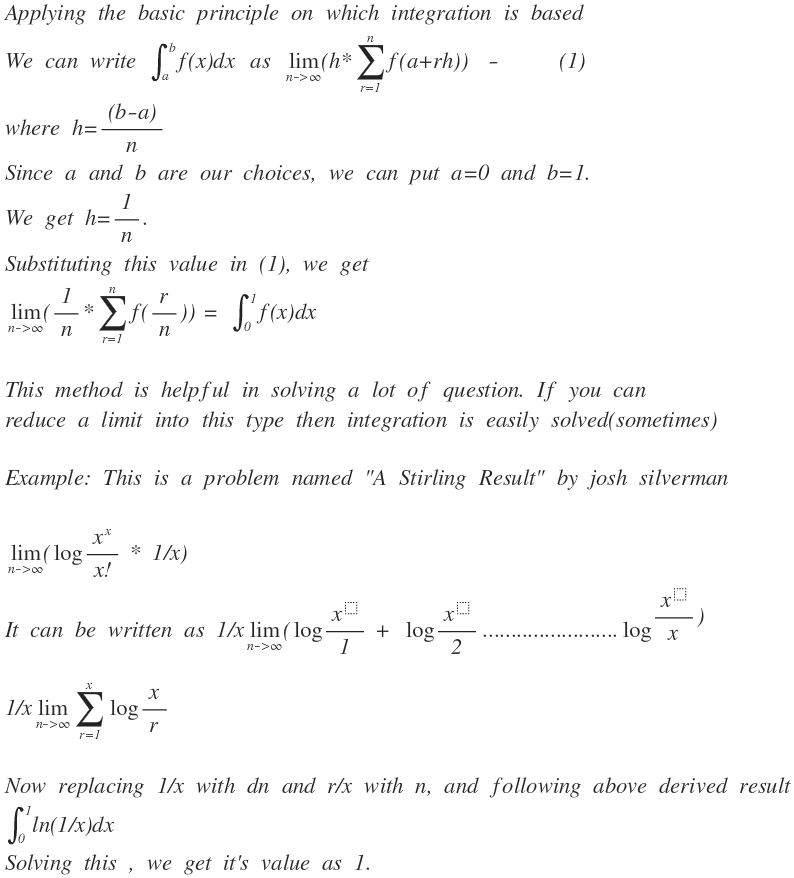Solving limits using integration.

Certain Limits can be evaluated by using a method known as limit as a sum. Transforming a limit question to integration makes it easy to solve. Sometimes, it is only possible way to solve a question. The method is explained in the image.
Note that above result is only true when limit is infinity. Also, integration not always go from 0 to 1. Again it depends on Limit. If summation is ending at 2x where x-> (infinity), integration is from 0 to 2. (Why so?). If you can't point out why, Mention in comments and I will answer.
However, lower limit is always zero given that summation starts from a finite value.
Since I don't know how to use Latex or how to insert image in middle of text, I am using image to explain it all. Can someone tell me how to write in Latex and insert images in between text.
Easy Math Editor
This discussion board is a place to discuss our Daily Challenges and the math and science related to those challenges. Explanations are more than just a solution — they should explain the steps and thinking strategies that you used to obtain the solution. Comments should further the discussion of math and science.
When posting on Brilliant:
*italics*or_italics_**bold**or__bold__paragraph 1
paragraph 2
[example link](https://brilliant.org)> This is a quote# I indented these lines # 4 spaces, and now they show # up as a code block. print "hello world"\(...\)or\[...\]to ensure proper formatting.2 \times 32^{34}a_{i-1}\frac{2}{3}\sqrt{2}\sum_{i=1}^3\sin \theta\boxed{123}Comments
"If summation is ending at 2x where x-> (infinity), integration is from 0 to 2." Please explain why and how? Can you please give one more example to eloborate it?